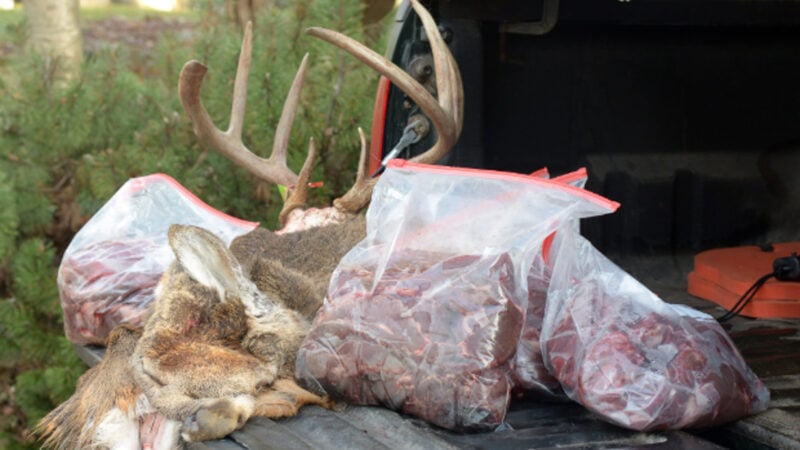There was quite a buzz stirring among the hunting community in recent weeks when news broke of hunters dying after eating CWD-infected deer. When the dust settled, headlines were changed, articles rewritten, and the majority of folks began to see the story as fake news.
How did it start?
Credit can be given to The Daily Mail for publishing a story – Two Hunters Become First Americans to Die From Zombie Deer Disease After Eating Infected Venison.
The story was said to have come from a research abstract published in Neurology – “Two Hunters from the Same Lodge Afflicted with Sporadic CJD: Is Chronic Wasting Disease to Blame?”

Field & Stream did their fair share of stirring the pot with their article, “Study: Hunters Die After Consuming CWD-Infected Venison.” The Field & Stream article has since been taken down and replaced with a solid article by our good friend, Will Brantley.
As you can imagine, the headlines and articles quickly made the rounds through social media causing plenty of confusion and concern.
And as you might suspect, there is more to the story.
“This is not a study and this is not a scientific paper,” veteran deer biologist and wildlife science coordinator for the Arizona Game and Fish Department Jim Heffelfinger wrote in an Instagram post Thursday. “The whole thing is only 344 words and is simply a mention about two hunters that died of [Creutzfeldt-Jakob disease] and both of them ate deer from the same deer population. There is no evidence of CWD infecting hunters.”
A release from the National Deer Association (NDA) referred to the report as a “sketchy online report” and urged hunters to use caution in their consideration of the report. They went on to say that, “nothing about this new report changes current knowledge or guidance on CWD in deer.”
The NDA release stated – “The brief report focuses on a 72-year-old man who died in 2022 of Creutzfeldt-Jakob Disease (CJD), a human disease that is similar to CWD in deer but never definitively connected through causation. We aren’t told where he lived. The man reportedly had a friend who also died ‘recently’ of CJD. We are given scant details about any of this, but according to the report, both men had ‘…a history of consuming meat from a CWD-infected deer population.’
This is not the same as eating meat from a CWD-infected animal. Just because CWD is in the population does not mean the patient ate a sick deer. In many CWD zones, prevalence rates are low and the vast majority of deer are healthy. If either of these patients in fact consumed CWD-positive venison, the evidence for this is not presented or even hinted at in the paper.
CJD, which affects about one in every 1 million Americans annually and is most common in people over age 55, is known to be sporadic and to appear in localized clusters. No previously investigated cluster has been found to have links to CWD in deer.
In fact, experts have looked for patterns or clusters among hunters in the oldest CWD zones without finding any. While the odds of two acquaintances both having CJD are slim, it is not impossible. Just because it is unlikely does not prove a connection to CWD, especially with no supporting evidence for that conclusion other than circumstance.
In Will Brantley’s Field & Stream follow up article he writes:
The study doesn’t say where this deer population was or what the CWD prevalence rate was in it. Some counties in southern Wisconsin have CWD prevalence rates as high as 28% in tested deer, but the rate is much lower than that elsewhere, and the definition for a CWD infected area can be pretty broad.
The point is, the study does not establish that the men ate infected venison or not. Maybe the researchers know beyond a doubt that they had their venison tested, that it came back positive, and they ate it anyway—but if they did, wouldn’t the study say so?
The findings also makes it clear that “Due to the challenge of distinguishing sCJDMM1 from CWD without detailed prion protein characterization, it is not possible to definitively rule out CWD in these cases.” Well, just because they can’t rule out CWD certainly doesn’t make CWD the culprit.
So how worried should you be about all these recent reports?
I think Brantley summed it up well here…
“When considering how freaked out you should be about this, it’s worth taking into context the largest CJD scare in history, too, which was the outbreak of mad cow disease in the United Kingdom in the late 1980s and 1990s. During that, which went on for years, 178 people were believed to have contracted a CJD variant from eating contaminated beef. That’s out of a population of about 60 million people. In response to the panic, 4.5 million cattle were slaughtered and discarded.”